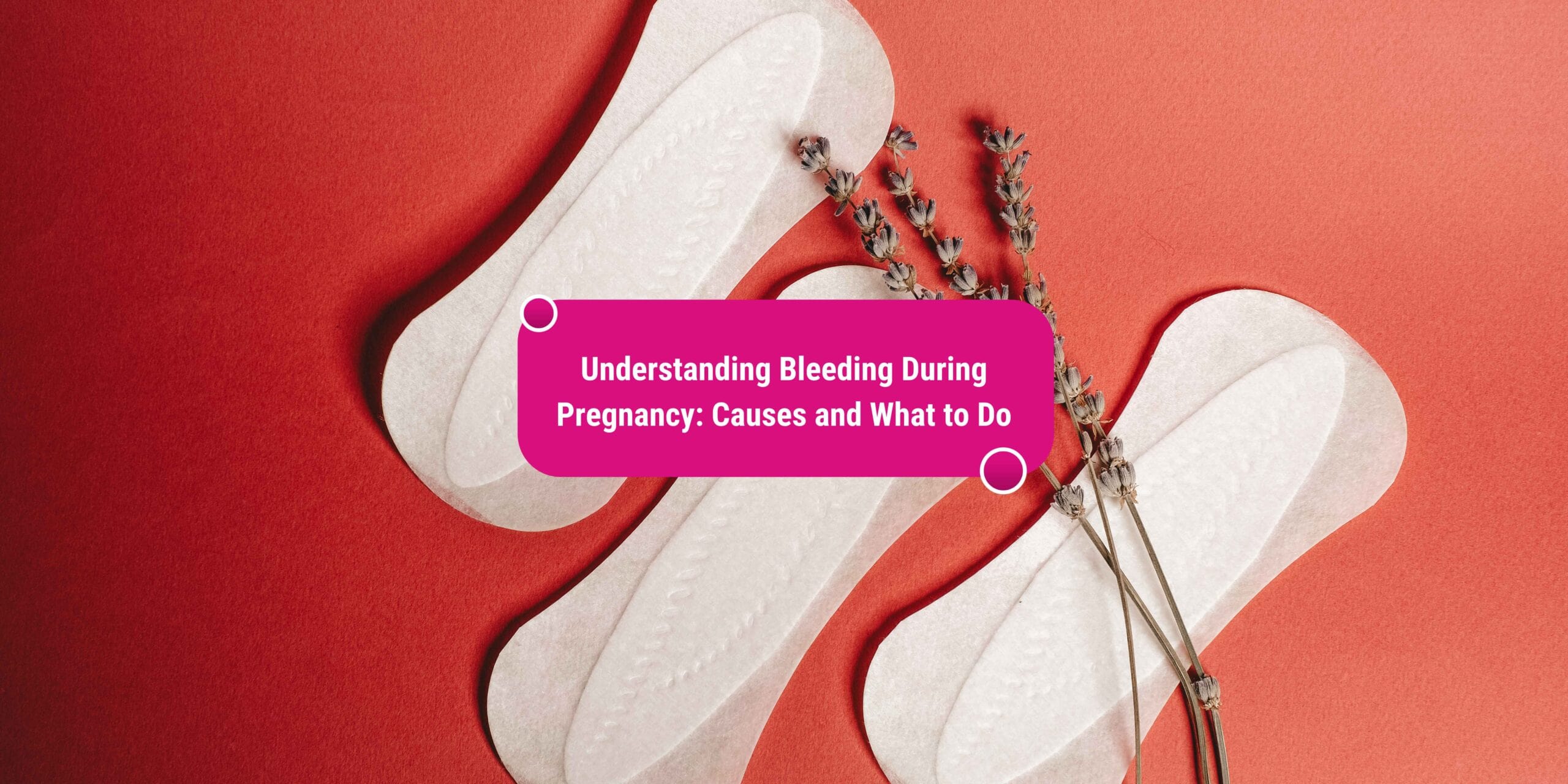Bleeding during pregnancy can be distressing. This distress can be compounded by the fact that the bleeding can either be absolutely normal or signal serious complications. It is always advisable that expectant mothers consult a healthcare professional when they have specific queries, rather than solely consulting search engines. This is an attempt to simplify the jargon associated with terms of bleeding during pregnancy. More knowledge and greater awareness will facilitate better maternal and fetal health.
Experts feel that bleeding can happen in 1 in 4 pregnancies. It is not necessary that every episode of bleeding indicates a miscarriage. In fact, not all women who bleed actually miscarry. Causes of bleeding in early pregnancy could include a normal pregnancy, loss of the fetus, an ectopic pregnancy, gestational trophoblastic disease, or fibroids. The mother must consult a healthcare professional to know the exact cause of bleeding. It is very hard for a mother to figure out the cause of her bleeding by herself. Some forms of bleeding, particularly later in pregnancy, can be the beginning of the baby being delivered. Mothers who experience bleeding, particularly in the third trimester, must approach the doctor immediately. It is very important to seek professional help.
Normal Changes in Pregnancy
As you journey through your pregnancy, your body undergoes many changes in physiology. It is no surprise that these changes can lead to light spotting or even light bleeding in some women. Hormonal changes during pregnancy can cause the vessels in the cervix to become tender and engorged. In addition, increased blood flow to the cervix due to pregnancy can cause the cervix to engorge and sometimes bleed with contact, such as during intercourse. These hormonal and physical changes usually resolve after the baby is delivered. As many as one in four pregnant women have some form of spotting or vaginal bleeding, and not all cases are cause for alarm. In fact, many women continue to have a normal pregnancy after experiencing undesirable bleeding.
That being said, detecting when this type of light spotting is dangerous can be alarming—and it might be that pregnant women might be prepared to monitor for it. In this section, we will further examine several causes of bleeding during pregnancy. When talking to an obstetrician, identifying the type of bleeding you are having is very helpful. It is important to recognize that reinforced awareness should not be taken as an endorsement of mothers checking for bleeding constantly to relieve the anxieties of pregnancy. Patients should consult their obstetrician right away if they experience any unusual symptoms of pregnancy.
Causes of Bleeding During Pregnancy

Many pregnant people experience some form of bleeding early, later, or toward the end of their pregnancies. Some of the causes are benign, and others are more serious. Symptoms that accompany the bleeding, the amount of bleeding, and when it appears all play a role in determining the severity of the situation. This section aims to explain why bleeding could occur while a person is pregnant. Later sections will explain these causes in greater depth. Causes: There exist a number of benign reasons behind why a person may experience bleeding while pregnant. Spotting and light bleeding can occur after the fertilized egg implants itself in the uterus. Vessels that connect the uterus and placenta could bleed for a multitude of reasons during the pregnancy and at birth, which can be small or severe. When the baby’s head descends further into the womb to prepare for delivery, some mucus can be dislodged, causing light pink or brown discharge. Benign growths of tissue can also bleed after the cervix softens. There are also more serious conditions creating pressure on the pregnancy, and expert medical attention should be sought if these occur. Cervical or vaginal infections only cause slight bleeding but can create a higher chance of miscarriage or stillbirth and can also endanger the person’s health. Large amounts of uterine bleeding are rarely heavy. These generally start after 20 weeks and can grow quietly. These can also put a heavy strain on the pregnancy and should be looked at quickly. In rare occasions, worsening uterine activity will lead to preterm labor. A dark, viscous form of bleeding, which is often confused with meconium, can suggest serious bleeding of the mother threatening the baby. Such dangerous forms of bleeding arise because of a deficiency of factors promoting blood coagulation or platelet formation. Facilitating the entrance of a needle into the fetal blood supply, with a high chance of causing the death of the fetus, can also lead to larger amounts of bleeding. Finally, the condition of pregnancy itself poses a higher risk if women experience or develop preeclampsia or hypertension. In most of these conditions, the woman will want to deliver the baby early if safe.
Implantation Bleeding
One of the earliest signs of pregnancy is implantation bleeding, which can occur when the fertilized egg attaches to the lining of the uterus. This type of bleeding often occurs around the time of a woman’s next expected period, and some women mistake it for their period. It usually happens about ten to fourteen days after conception, around the time a woman would typically expect her period, and is generally lighter in flow and color than menstrual bleeding. Because the symptom is so subtle and in line with a woman’s natural monthly cycle, some women are not aware it is implantation bleeding. The flow is light and short and is pink or brown, as opposed to the bright red flow associated with menstrual bleeding. This is because the blood has taken time to descend towards the vagina and turn brown. Cramps can accompany implantation bleeding, but they are milder compared to menstrual cramps and tend to occur once or twice in a day. The bleeding can last from a few hours up to a few days. However, rarely it can last for five days, but if the flow increases in time and color and is mixed with clots, it indicates the impossibility of it being implantation bleeding. Implantation bleeding is not a trigger for possible termination of pregnancy; on the contrary, pregnancy is possible if this symptom is encountered. To check for pregnancy, a regular urine pregnancy test can be taken about seven days after the first missed period. Once a woman becomes pregnant, a menstrual chart should be created and kept, which will in turn help to decipher signs and symptoms of different types of bleeding.
Miscarriage
In many cases, miscarriage is the cause of pregnancy loss and is the most likely explanation when bleeding is the first symptom. About 1 in every 8 pregnancies ends in miscarriage. 1 in every 4 women experiences the loss of a pregnancy. We define a miscarriage as the loss of a pregnancy in the first 23 weeks. The term covers many things: sustaining a miscarriage at 22 weeks or during the first few weeks looks very different and can feel very different for each person involved. Vaginal bleeding can be light or heavy, perhaps combined with period-like cramps and/or more severe stomach pain. You may also have a ‘show’ in your underwear or when you wipe. This can look like mucus streaked with dark brown blood. Because of the nature of the cause of miscarriage, there isn’t a clear level of bleeding that can help us predict the outcome.
Meeting other people who have experienced miscarriage can help. Sharing experiences can enable you to talk, listen, and provide support. Knowing that other people are going through the same thing can provide reassurance, help you feel less isolated, and help you to feel normal. It is important to continue the conversation instead of hiding these experiences away just because miscarriage is a sensitive subject. Getting pregnant following a miscarriage is a difficult and emotional decision. Miscarriage can also be a lonely experience. Understanding possible causes, whether you are at risk of premature birth recurrence or future miscarriage, or if you have a partial molar or molar pregnancy, can be a relief in order to construct future plans and ensure the best possible care for your next pregnancy. Identifying the cause can also help healthcare professionals reduce the risk in a future pregnancy. If you have any worries about what has happened, please consult a healthcare professional.
Ectopic Pregnancy
An ectopic pregnancy is a pregnancy that occurs when a fertilized egg implants outside the uterine cavity and in most cases, in the fallopian tube. There is no way to save the developing embryo due to an ectopic implantation, leading to life-threatening ruptures and severe internal bleeding. Ectopic pregnancy is a serious medical condition and can lead to death without treatment. The most common symptom is abdominal pain and vaginal bleeding. Detection of serum human chorionic gonadotropin levels can confirm the diagnosis, while pelvic ultrasonography plays a primary role in localizing ectopic pregnancy. Several medical and surgical treatment approaches can be applied, and one should select the most appropriate approach depending on the symptoms and the clinical condition of the patient. Overall results after the treatment of ectopic pregnancy have good outcomes with a success rate of more than 95%.
Ectopic pregnancies happen very early in the pregnancy, between 5 and 14 weeks, although most happen in the first eight or nine weeks. When an ectopic pregnancy ruptures or grows very large, it can cause heavy vaginal bleeding, severe pelvic pain, and in severe cases, shock and death. Most cases of ectopic pregnancy are discovered before they cause heavy bleeding. Ectopic pregnancies detected early are unlikely to be life-threatening, but they do need to be treated. Individuals who reproduce are significantly more likely to recognize the symptoms earlier and be more motivated to go to their healthcare provider if they know about this condition and its dangers.
Placental Problems
Often considered the most severe cause of bleeding during pregnancy, placental issues can occur due to a variety of reasons. The placenta is the organ that connects the growing fetus to the uterus and provides essential nutrients and oxygen. Blood flow through the organ can become compromised during pregnancy, leading to pregnancy loss or harmful effects for both mother and baby. There are several types of placental issues that can occur.
Placenta previa is the condition in which the placenta implantation is very low in the uterus and partly or completely covers the cervix. Placenta previa occurs in about 1 in 200 pregnant women, but many times it may resolve before delivery. Placental abruption occurs when the placenta begins separating from its attachment site before delivery. This can cause vaginal bleeding, although the blood might get trapped behind the placenta, in which case the mother won’t see any blood. Because of the potential for significant blood loss, both of these conditions can be life-threatening, and the baby may require immediate delivery if the diagnosis is confirmed. Regular prenatal check-ups are very important so the doctor can find the exact cause of the bleeding episodes. Vaginal ultrasounds are also an important diagnostic tool since they can monitor the location and health of the placenta. If placenta previa or another placental condition is found, the patient may require a cesarean. In the case of an abruption, an early emergency delivery may be needed so both mother and baby will be provided with the best care.
Cervical Changes
In preparation for birth, the cervix begins to dilate or open. Cervical changes are sometimes accompanied by effacement, or the thinning of the cervix. The cervix may begin to dilate and start softening and thinning (effacing) weeks before labor. The capillaries that supply the cervix need to grow and expand during pregnancy because the increased blood volume causes the cervix – like any other part of the body – to be engorged with more blood. Increased vascularity to the cervix during pregnancy contributes to its color changes and makes the area hyperemic, or easily vascularized.
The cervix is also flush with blood vessels and may bleed after sex and other activities, including if it is touched during a pelvic exam. As a result of the increased blood and blood vessels, some amount of cervical bleeding (pink or brown in color) might be normal during pregnancy. It is not uncommon for women to notice light spotting, which can range from barely noticeable to relatively small and inconsistent. In addition, women can experience cervical bleeding or spotting after regular pelvic exams during prenatal visits, as well as light bleeding or spotting after sex. Any accompanying pain with bleeding may indicate something abnormal or concerning and prompt a visit to the doctor or midwife. It is helpful to know what is normal, so that if you experience cervical bleeding that is not part of your body making the necessary changes that come with pregnancy, you can bring it up with your care provider sooner, instead of waiting for your next regular prenatal visit. For most women, regular prenatal exams and visits are enough to make a diagnosis.
When to Seek Medical Help
Expectant mothers need to trust their instincts when it comes to decisions regarding their own health or that of their unborn child. Some symptoms should never be ignored, and you should seek immediate medical help if any of the following apply:
– If you’re in the early weeks of your pregnancy and rush to the toilet to find a lot of blood spurting from your vagina and the pain in your tummy becomes worse, the chances are it’s an ectopic pregnancy. – Any bleeding that occurs during the second and third trimesters of pregnancy should always be investigated, as any amount or type of such bleeding is another reason to go to the hospital if close to term.
If there’s any concern at all, it’s safer not to wait too long. Many genuinely worrying bleeds end up with good outcomes, but once a medical opinion has confirmed ongoing signs of pregnancy inside the womb, this will stay true, so any symptom until proved otherwise is Serious Bleeding until Otherwise Disproven.
For all these situations, phone the local hospital obstetric advice line and see if they want to see you. What will happen if an ectopic pregnancy appears likely is hospitalization and a series of tests to decide what to do next. Most departments in most hospitals are set up to assess and reassure or look after you further without keeping you in for too long against your will if the doctor feels you are safe to go home with more rapid reassessment as an outpatient.
In summary, the key to understanding bleeding during pregnancy is understanding the causes. The ability to distinguish between normal bleeding and potential problems during pregnancy will help women know when to seek medical help. There are many different causes of vaginal bleeding in pregnancy. Certain ones are common and considered very dangerous conditions that require immediate transfer to a hospital. If you’re bleeding, it is important to communicate with your healthcare provider to explore potential causes and develop the best plan for care. If a woman is pregnant or looking to become pregnant, pregnancy is an exciting time but one that still often brings fear. There are a lot of changes happening within your body, and some of it is new territory. However, bleeding is never normal. It is always important to look into why it is happening and communicate with a doctor or midwife. This will ensure you are appropriately exploring the causes, such as attachment bleeding or placenta previa, and ultimately make the best decisions for yourself and your pregnancy. Please make sure to address your concerns with your medical professional and go to the hospital if you are experiencing symptoms such as bleeding with a drop in blood pressure and heart rate, abdominal pain, or fainting. So while the “is it normal?” question is asked with a lot of answers in mind, remember that being proactive about your health is the best way to achieve an excellent pregnancy outcome.



